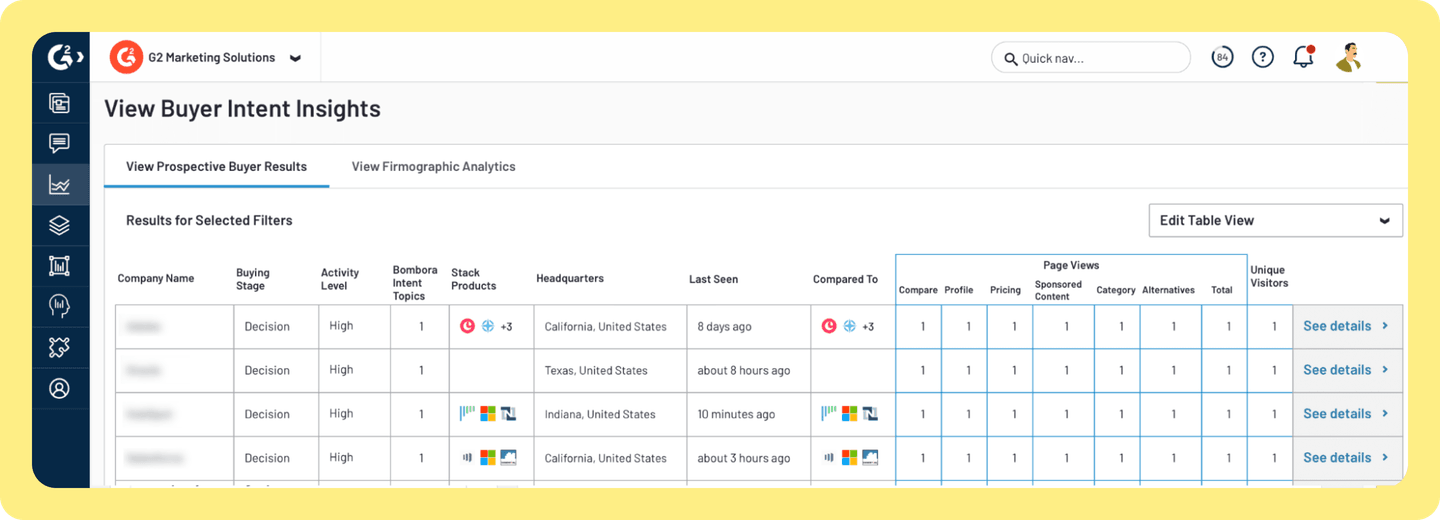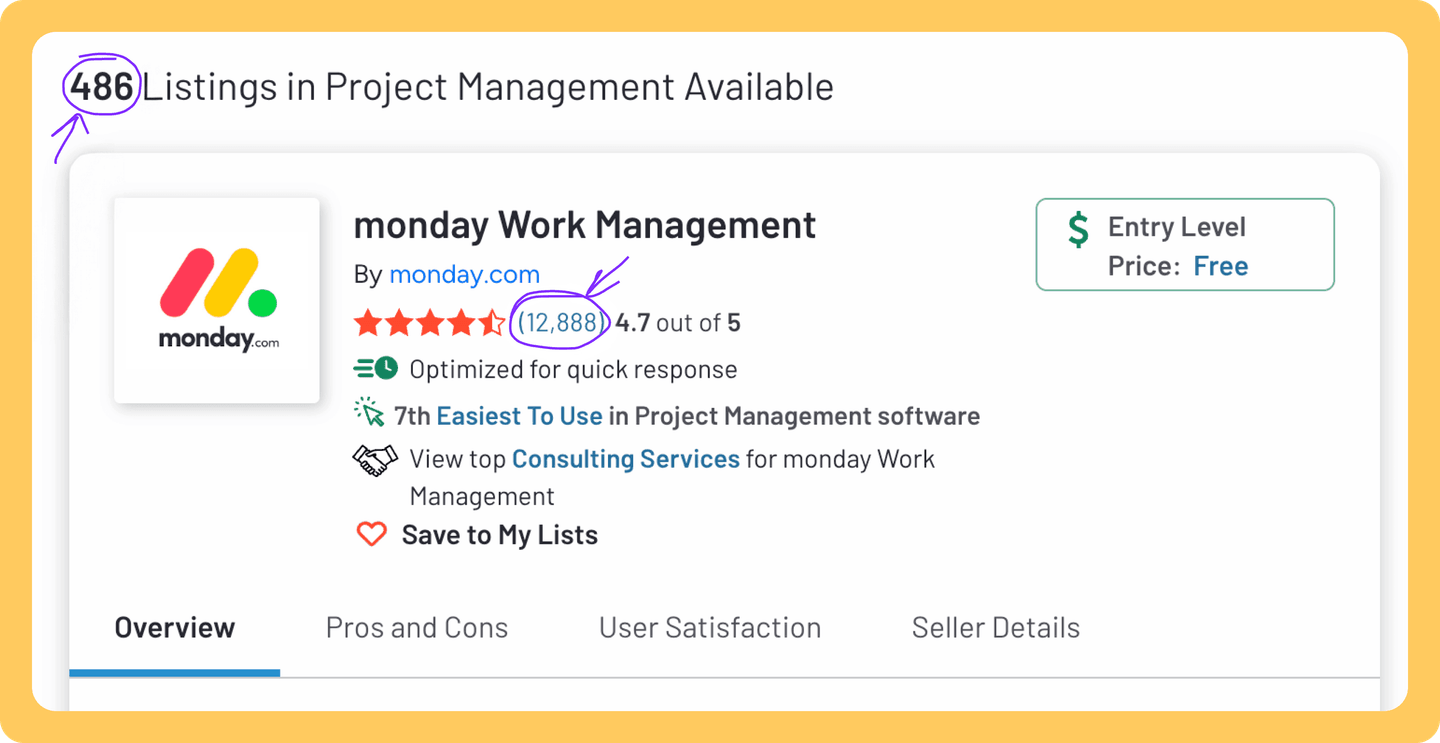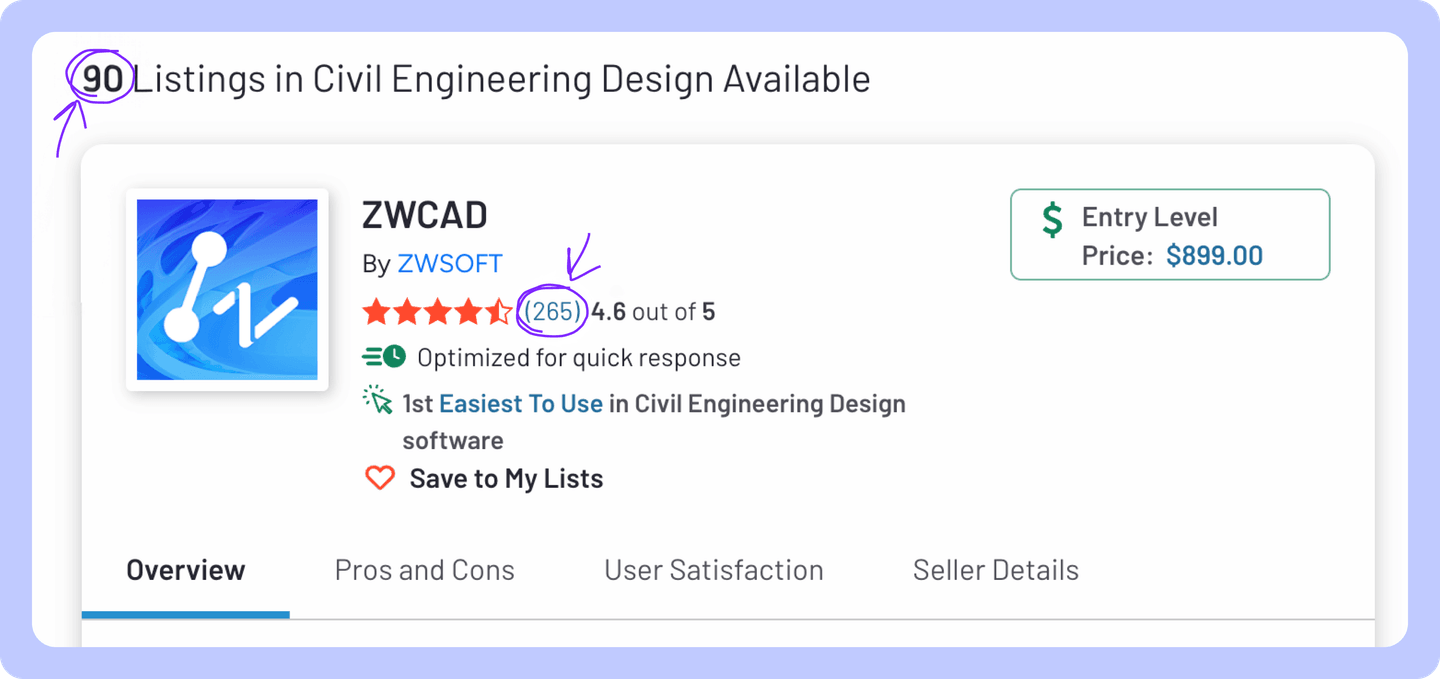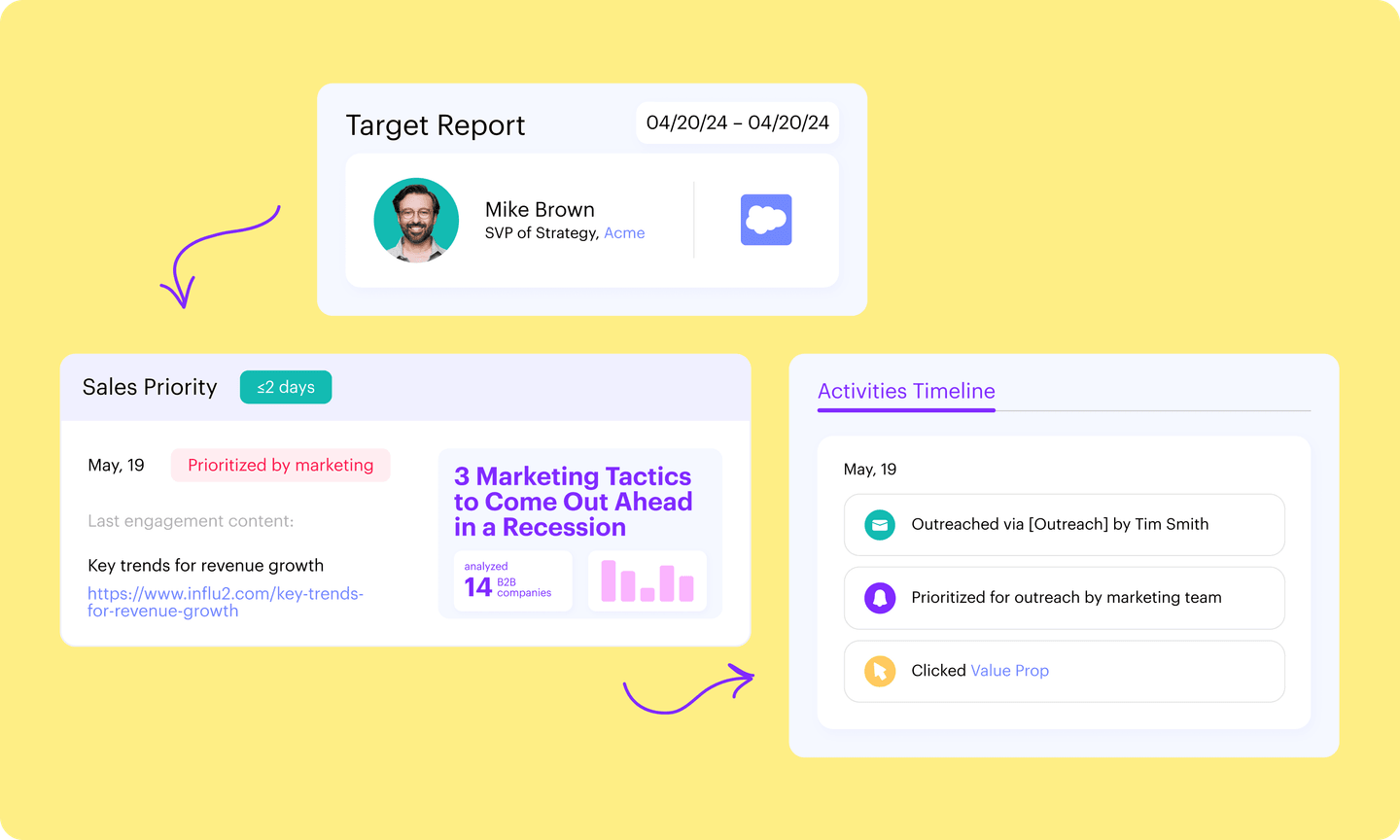What G2 Intent Data Gets Right (And Where it Falls Short)
Using intent signals can sometimes feel like gauging your level of friendship by waiting to see who shows up unannounced at your house.
You could be ready to spread a feast—but unless you invite people, it’s much less likely that someone will come.
Intent data is based on a potential customer taking an action. In most cases, that means you’re sitting around waiting for someone to research your product or industry with something like G2.
When you do get that signal, you’re ready to roll out the red carpet. But what about the majority of your addressable market who haven’t signaled they’re actively looking for a product? What about the people who haven’t even heard of your product?
Is G2 intent data the answer, or is there a better way to proactively “invite” those intent signals? (Spoiler alert: there is.)
If you’re interested in how G2 intent data works and a more proactive way to approach, keep reading.
Guess who’s searching: How G2 intent data works
While it’s mainly a review platform, G2 also offers intent data to the businesses listed with their site. They get millions of hits per month to different products and categories, and many of these organic hits are coming from people who are interested in buying (i.e., your potential customers).
As people do research on G2, you can get notified about which companies have checked:
- Your business profile
- Your pricing page
- Tool alternatives pages
- Your category
- A comparison page that included your product

G2 also gives you a buyer intent score based on their activity. This score tells you how interested a company might be in making a purchase, or whether they’re just casually browsing.
In theory, this information is helpful across all GTM teams:
- Sales can see when companies are researching their product and reach out.
- Marketing can create ABM campaigns to target companies who are already in the market.
- Customer Success can proactively retain customers who are researching competitors.
But of course, no platform is perfect.
Where G2 intent data falls short
G2’s main offering isn’t intent data.
Most companies use G2 to list their tools, gather reviews, and generate brand awareness as part of their GTM strategy. The intent data they provide is a byproduct of their core offering (even though it’s sold as a separate service with its own hefty price tag).
And while G2 is a powerful tool, not everyone finds its intent signals particularly helpful.
The problem is, if your team doesn’t use intent signals, they’re basically just sitting on a shelf gathering dust.
Here are three reasons why some users aren’t able to turn intent data from G2 into something that their sales and marketing teams actually use:
You’ll only see information on the company, not the contact
As with most intent data providers, G2 will only show you a list of companies, not people, who are researching your product.
G2 gives you the ability to add gated resources that people can access by adding their email. However, as one user points out, until they do this, you won’t know who inside a company is researching your category.
That means Sales needs to spend additional time researching to find the right prospect at the companies G2 surfaces.
While these insights can be a helpful guide when you have a large pool of target accounts that rely heavily on G2 for research, they are still very limited in scope.
The insights you get depend on the popularity of your category
Since G2’s intent data is based on people’s searches, the amount of data you get will vary greatly depending on the category you’re in.
It’s simple math: if your category isn’t often searched on G2, you won’t get many insights.
For example: if we search for Project Management Software on G2, we’ll get a list of 486 tools, with the top few listings showing 10k+ reviews (and some with over 20-30k).

On the other hand, if we hop to the Civil Engineering Design Software category, we’ll only see 90 listings, most of which only have 100-200 reviews.

Here’s the point: if you’re in a niche category, or trying to define a new category, you’ll have a much smaller pool of people searching for your tool on G2. That means you’ll spend a lot of money and time waiting for intent data that may never come.
Pro tip: If you're serving a niche audience, it’s especially important to focus on creating interest and awareness rather than waiting for it to come. That’s something Influ2 can help with—you can deliver relevant ads to specific contacts at your key target accounts and get back intent data for those individuals based on their engagement.
To use the data, you need to get it out of G2
You can use basic filters in G2 to only see results that match your ideal customer profile and high buying intent.
But beyond this, the data in G2 isn’t very actionable until you get it out of the tool.
You can use G2 in combination with 6sense, Bombora, LinkedIn, and other tools to get more out of the data, but this just means layering on even more software subscriptions to your already bloated ABM budget.
How G2 intent data stands against Influ2
This is not an apples-to-apples comparison.
Essentially, G2 is a software review platform that also shares second-party intent data with users.
Influ2 is built for contact-level ABM.
Both G2 and Influ2 show you intent signals (in different ways). And both can be used by ABM teams to narrow their focus on potential customers who are showing signs of interest.
But, aside from those similarities, the tools run in completely different circles.
Here are the two main differences between G2 and Influ2:
The depth of the data
While G2’s data is based on individual activity on their website, the information they give you as the user is only at the account level.
That means you’ll see that someone at Google researched products in your category, or viewed a comparison page that mentioned you, but you still won’t know who within the company was doing that research (or whether that person actually has any say in a purchase decision).
On the other hand, Influ2 gives you contact-level intent data across social, search, ads, and third-party content. You tell us which buyers you want to target (synced from your CRM lists), which topics are relevant to your business, and Influ2 tracks the signals.
The ability to be proactive rather than reactive
To get intent signals from G2, someone needs to be searching for your industry or product category. Without that initial search, there is no data to draw from.
But there are probably hundreds (thousands?) of potentially fantastic customers who simply haven’t heard of your product yet, or don’t know that a specific solution exists for the challenge they’re facing.
That’s where proactive intent signals come in.
Influ2 allows you to build ad campaigns that target individuals in the accounts you want to close, essentially creating intent signals for the exact people your sales team wants to reach.
While Sales is actively pursuing an account, Marketing provides air cover with targeted, relevant ads. When someone clicks on an ad, it may be the first time they’ve heard of your product, but they’re showing interest—like a big neon sign telling your sales team who to reach out to first.
Even when your team is already in conversations with a prospect, you can support those efforts by targeting other individuals in the buying committee with relevant ads. That way, when they’re added to the conversation, they already know who you are.

Is G2 intent data enough?
G2 is a great tool for ABM teams whose audience relies heavily on review sites for research. It’s like a spotlight that points you to where demand might already exist.
But it can't tell you when specific buyers at your target accounts search relevant keywords, read articles about relevant topics, or post on social. And it also won't let you run ads to those specific people and know when they engage. But Influ2 can.
Ready to build a happier, healthier pipeline? See what contact-level ABM can do for your team: book a demo of Influ2.
Or, read our breakdowns of other intent data providers:
Dominique Jackson is a Content Marketer Manager at Influ2. Over the past 10 years, he has worked with startups and enterprise B2B SaaS companies to boost pipeline and revenue through strategic content initiatives.


